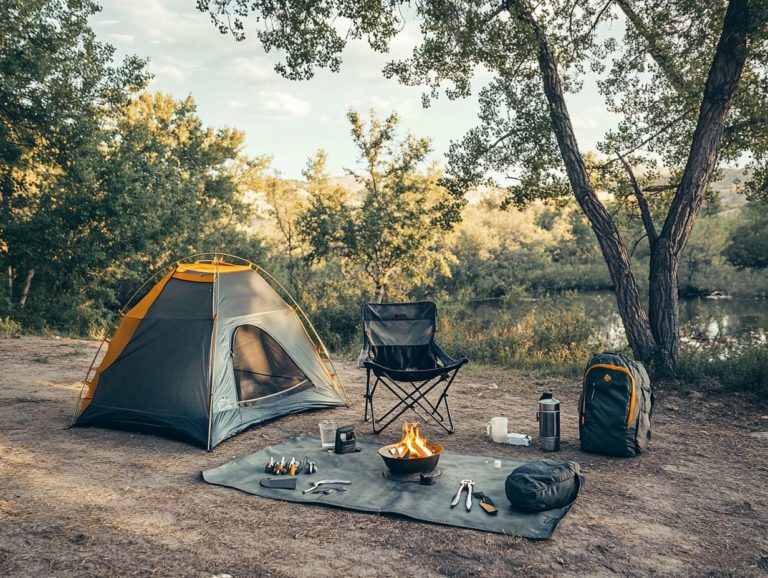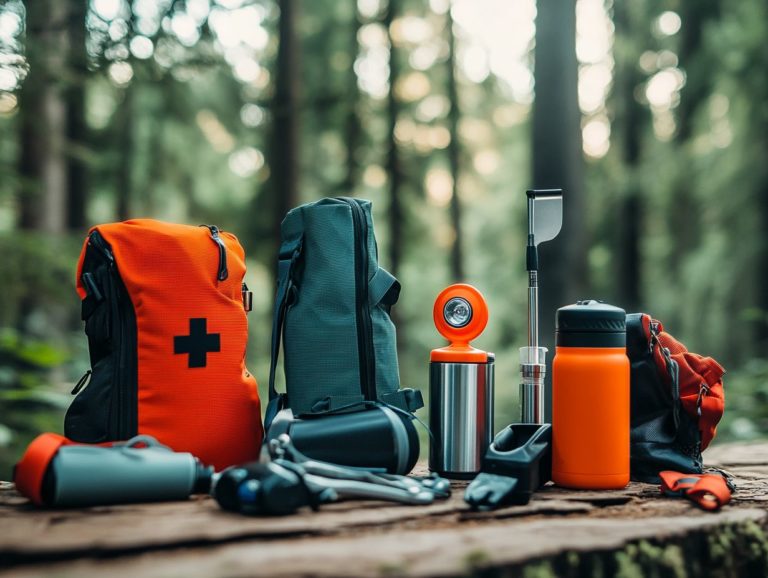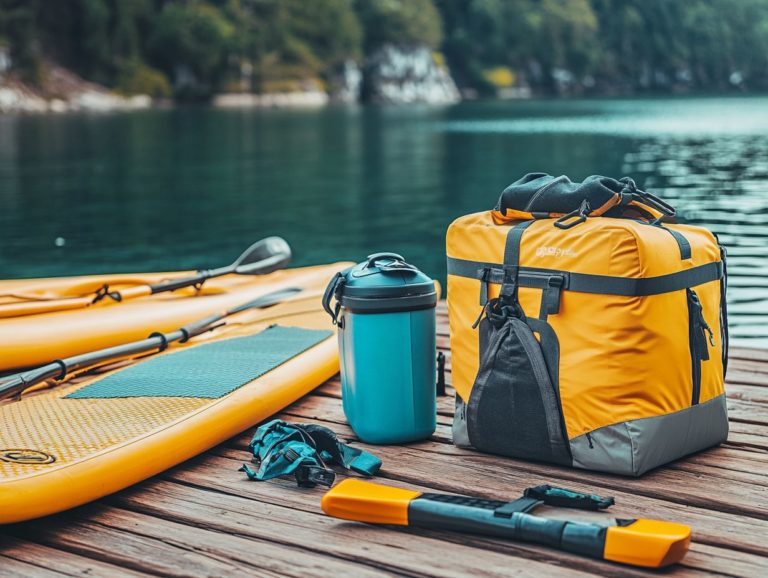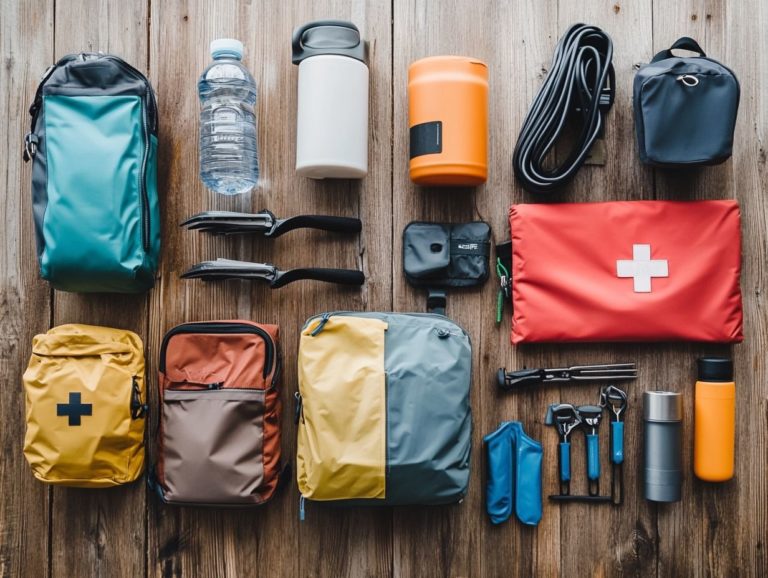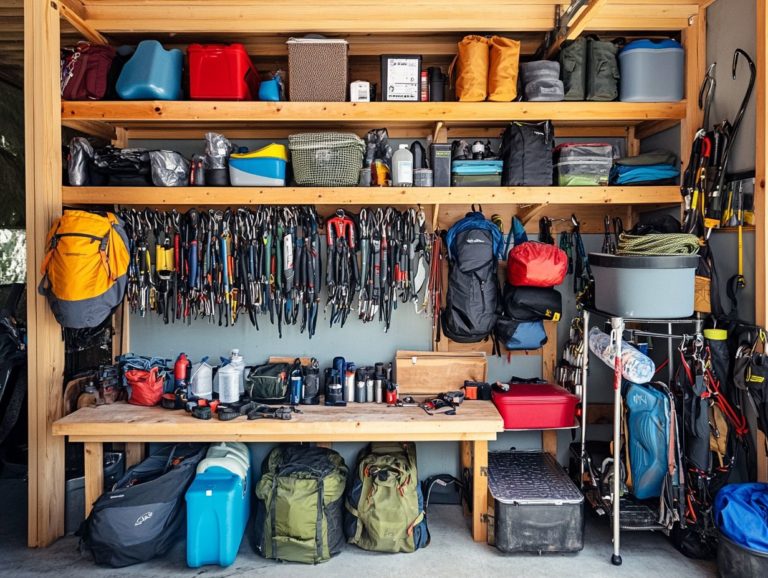How to Select the Right Emergency Accessories
In an unpredictable world, preparing for emergencies is essential. An emergency kit can make all the difference.
Understanding emergency accessories is key to your safety. This article covers what counts as emergency accessories and how to choose the right items.
You’ll learn how to create an effective emergency kit. We ll outline must-have items and explain why regular maintenance is crucial.
Equip yourself with knowledge that will keep you safe when it matters most.
Contents
- Key Takeaways:
- Understanding Emergency Accessories
- Types of Emergency Accessories
- Factors to Consider When Choosing Emergency Accessories
- Creating an Emergency Accessories Kit
- Must-Have Items and Tips for Organization
- Maintaining and Replacing Emergency Accessories
- Frequently Asked Questions
- What are some important factors to consider when selecting emergency accessories?
- What types of emergency accessories should I have in my emergency kit?
- How do I know if the emergency accessories I am considering are durable and reliable?
- Are there any emergency accessories that are specifically designed for certain types of emergencies?
- Can I mix and match emergency accessories from different brands?
- How do I ensure that my emergency accessories are always ready for use?
Key Takeaways:
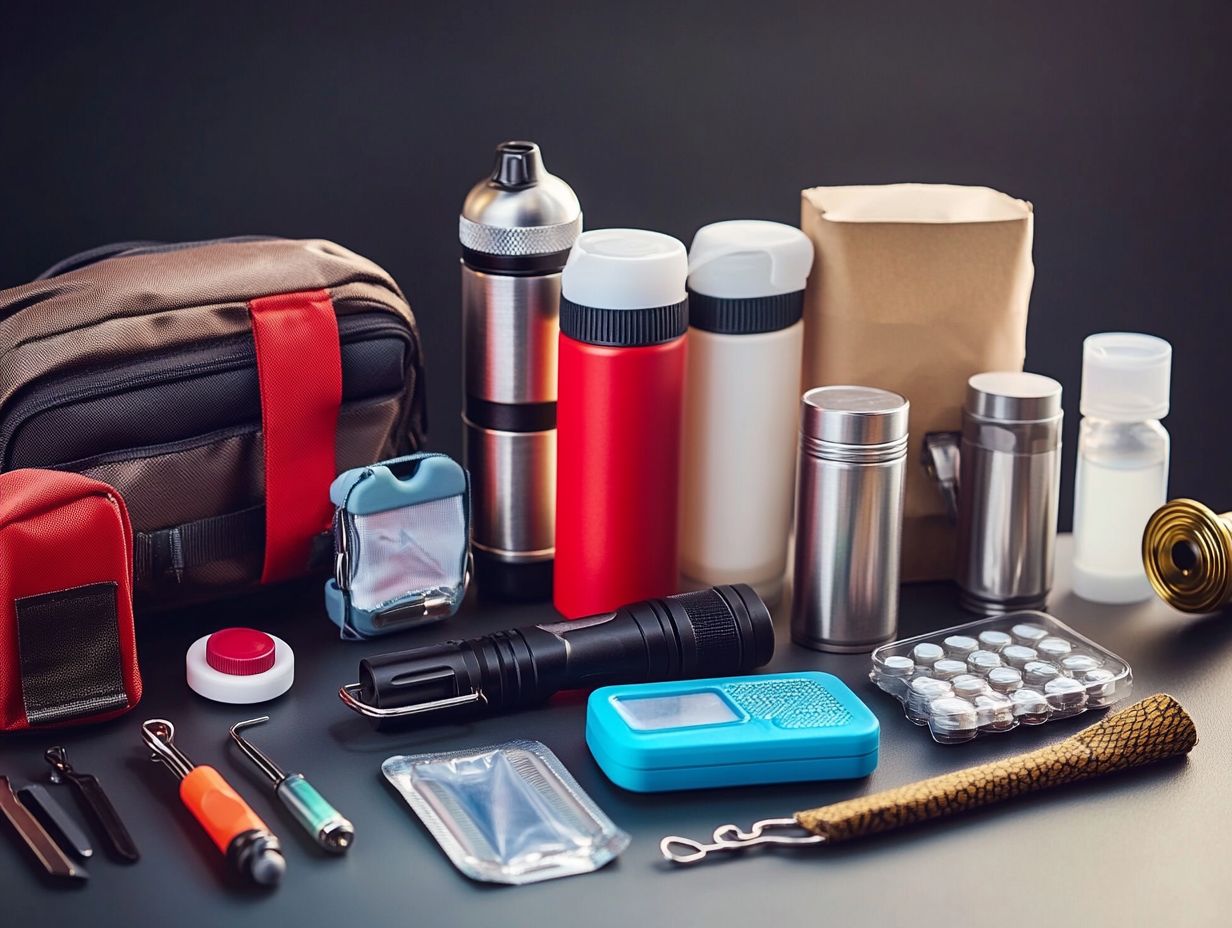
- Choose emergency accessories based on your location and climate.
- Consider the number of people and the duration of the emergency.
- Regularly maintain and replace emergency accessories.
Understanding Emergency Accessories
Emergency accessories are vital for protecting lives during unexpected events like natural disasters or wildfires. An effective emergency kit includes important items designed to provide immediate help during a crisis.
From a portable water filter to a complete first aid kit, these tools boost your preparedness. With new technology, you can now add devices like an emergency radio or a rugged smartphone case to your home plan.
Knowing about these accessories can save lives in emergencies!
What are Emergency Accessories?
Emergency accessories are crucial tools made to support you during crises. They help safeguard your safety, health, and survival in various situations.
These accessories include items like:
- First aid kits filled with bandages and antiseptics.
- Backup power sources like generators or battery packs.
- Gas detectors that alert you to hazardous leaks.
Each item plays a key role in responding to emergencies, giving you the power to act quickly when faced with unexpected challenges.
By integrating these supplies into your preparedness plan, you can protect yourself and your loved ones. You’ll also gain peace of mind knowing you’re equipped to face the unforeseen.
Types of Emergency Accessories
Emergency accessories come in various types, designed for specific situations like hurricanes or health crises. An optimal kit should include a portable water filter, chlorine bleach for sanitation, and hand sanitizer to prevent infections.
Each item has a specific purpose, allowing you to navigate different scenarios confidently. Familiarizing yourself with the various types of accessories can greatly enhance your resilience against potential threats.
Essential Items for Different Situations
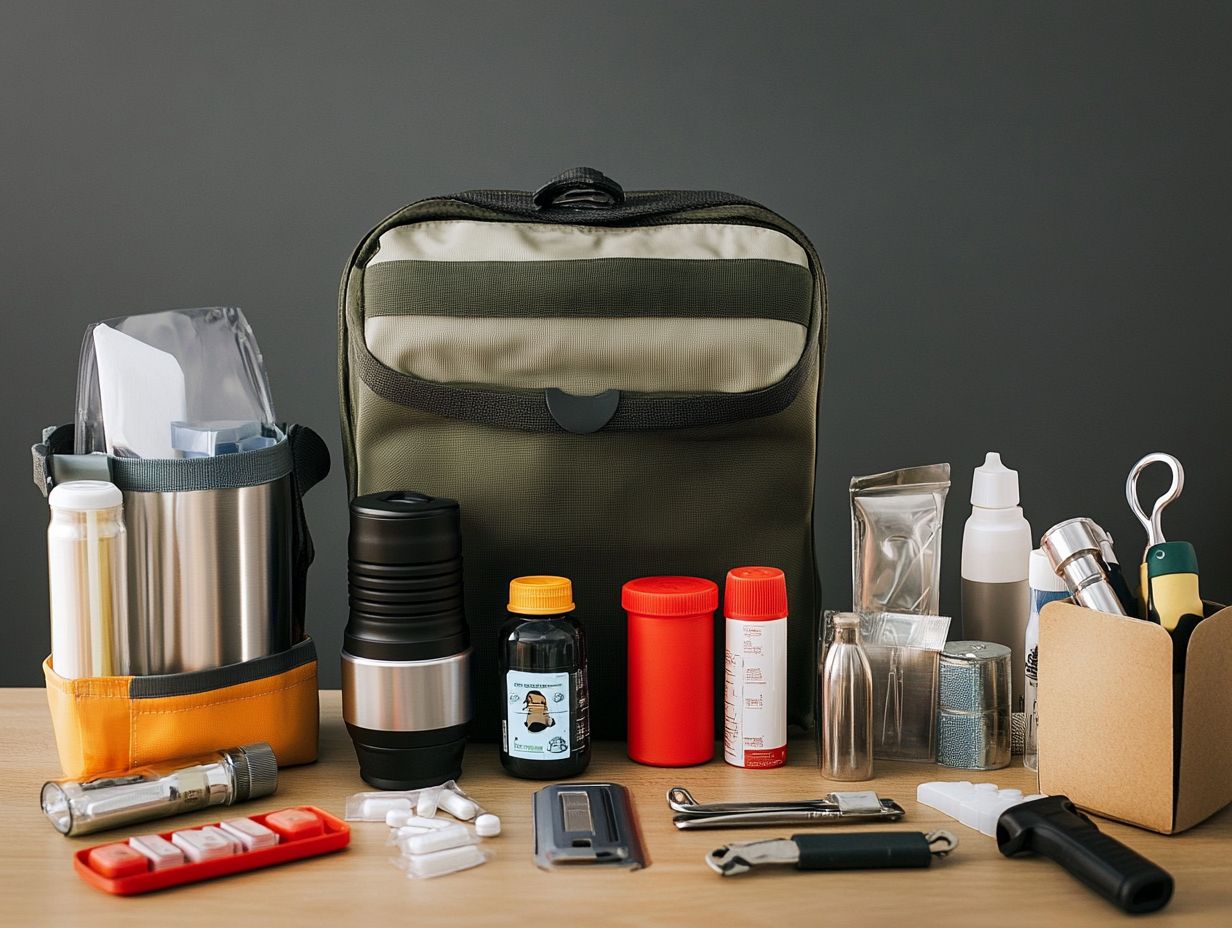
Choosing essential items for various emergency situations is crucial for ensuring your preparedness and safety. Whether you’re facing a hurricane, a Texas winter storm, or wildfires in Hawaii, each of these emergencies presents unique challenges that demand thoughtful preparation.
For example, waterproof gloves are absolutely critical in flooding conditions. They enable you to handle contaminated materials without compromising your health.
When surviving a winter storm, a propane stove is an important tool. It allows you to cook food and stay warm when the electricity goes out.
Similarly, duct tape is invaluable in a multitude of scenarios. Whether you re patching leaks in tents or securing windows against storm debris, its versatility is unmatched.
Plastic sheeting offers multiple benefits. It provides protection from rain or wind while also serving as a makeshift shelter during unexpected crises.
Factors to Consider When Choosing Emergency Accessories
When selecting emergency accessories, it s essential to consider several key factors: your location, climate, the number of people involved, and the expected duration of the emergency.
If you live in a hurricane-prone area, prioritize a complete emergency kit. Include a propane stove and a reliable emergency radio. Conversely, if you’re in a colder climate, you might need to include backup power sources to ensure warmth.
By thoughtfully evaluating these elements, you can craft a tailored emergency plan that effectively addresses your specific needs.
Location and Climate
The location and climate are pivotal in determining the emergency accessories you need for effective preparedness during home emergencies.
If you reside in arid regions, you might face a heightened risk of wildfires. In this case, having fire-resistant blankets and portable water pumps becomes essential for both protection and evacuation.
If you live along coastal areas, your focus should be on hurricane preparedness. This means prioritizing sturdy tarps to cover windows and gathering additional supplies, such as a reliable weather radio and high-quality flashlights. These will help you navigate potential power outages and ensure your safety.
This contextual awareness shapes the types of emergencies you may encounter. It underscores the significance of being equipped with the right tools to confront these situations with confidence.
Number of People and Duration of Emergency
The size of your household and the anticipated duration of an emergency significantly influence the contents of your emergency kit.
If you have a larger family, you ll require a more substantial stockpile of food, water, and medical supplies compared to someone living alone. If the emergency stretches beyond a few days, it becomes vital to include backup power sources to keep essential devices running.
If you depend on medical equipment like CPAP machines (used for sleep apnea), having extra batteries or a portable generator at the ready is essential.
By customizing your kit to meet specific needs, you not only enhance your safety but also cultivate a sense of preparedness for whatever unforeseen challenges may arise.
Creating an Emergency Accessories Kit
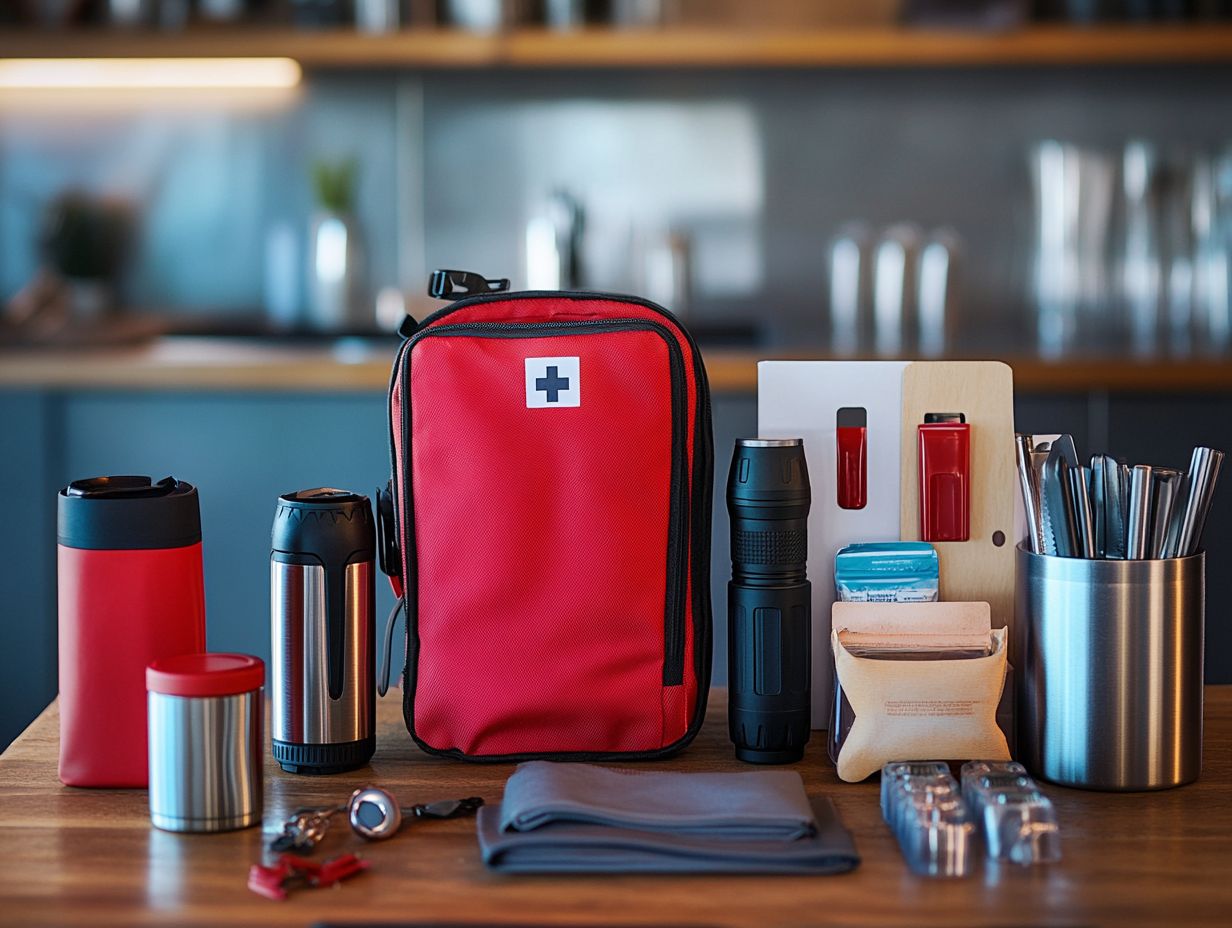
Building your emergency kit is crucial for your safety and peace of mind during crises. It should encompass a variety of essential items recommended by organizations like the American Red Cross and experts in emergency management.
Must-Have Items and Tips for Organization
When putting together your emergency accessories kit, ensure you include essential items like hand sanitizer, waterproof gloves, and masks. These are crucial for your health and safety!
Don t overlook items like a first-aid kit, flashlight, and snacks that don t spoil easily. These essentials address immediate needs by aiding in physical ailments, ensuring visibility, and providing nourishment when food access might be limited.
Organizing these items in a clear, labeled container is key to promoting a swift response during high-stress situations. Create subcategories for medical supplies, hygiene products, and emergency food to make retrieval quick and effortless.
Check your kit regularly for expired items and restock as needed. This way, when disaster strikes, you can be assured that everything you need is readily available and easy to find.
Maintaining and Replacing Emergency Accessories
Maintaining and replacing emergency accessories is essential to guarantee their effectiveness when you need them the most. This requires regular check-ups and timely updates to your emergency kit, ensuring you re always prepared for the unexpected.
Regular Check-Ups and Updates
Regularly checking and updating your emergency kit is essential to ensure all supplies remain functional and relevant. Consider incorporating items like a LifeStraw for water filtration and a Coleman stove for cooking.
To maintain your kit effectively, start by inspecting best by dates on critical supplies such as food, medications, and batteries. Ensure each item is in proper working order and replace any worn-out or broken tools. Reassess the kit s contents to align with your current needs. Don t forget to add personal hygiene products or specific first-aid essentials that may have been overlooked.
Keeping your kit up to date enhances safety and instills confidence during emergencies. This ensures that anyone relying on it has immediate access to necessary resources without delay.
Frequently Asked Questions
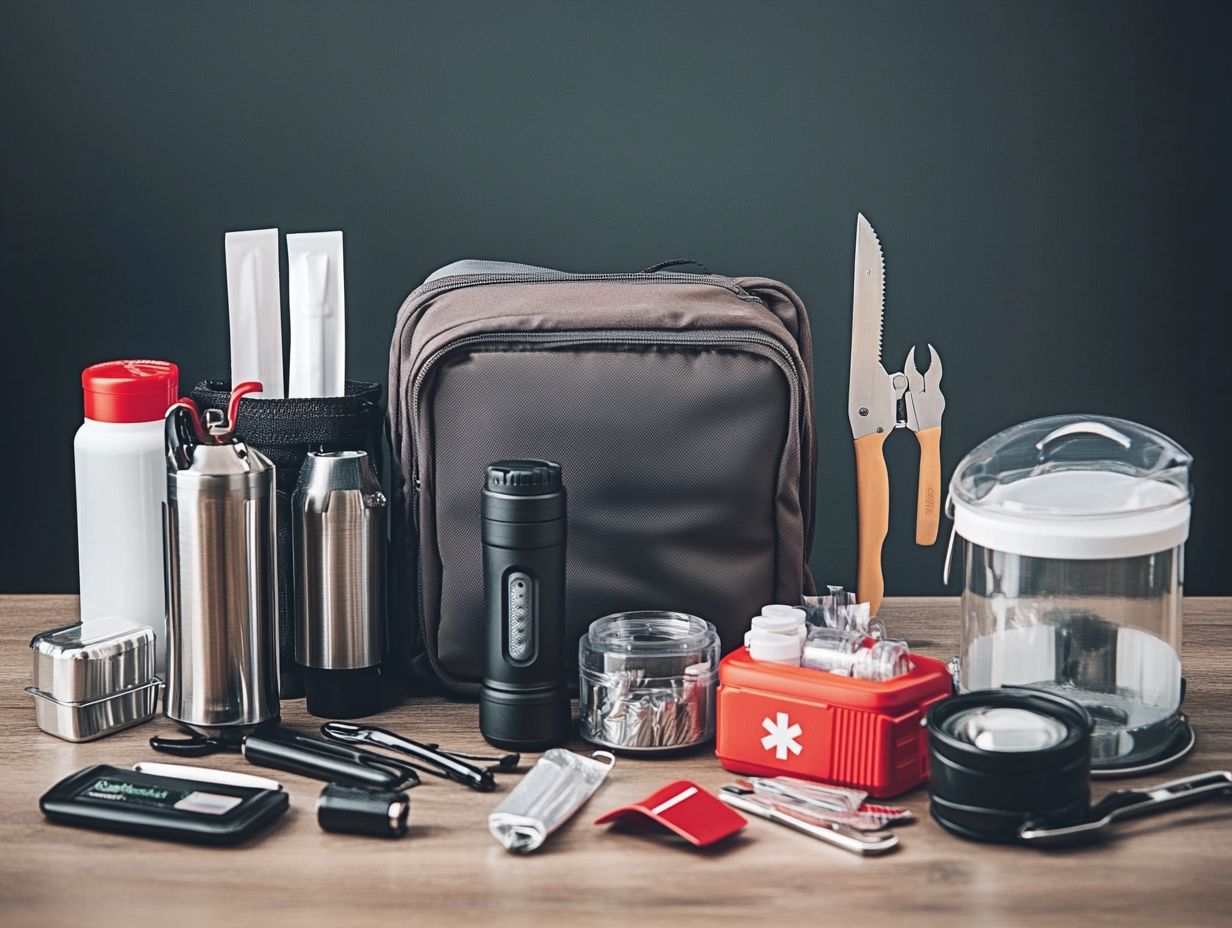
What are some important factors to consider when selecting emergency accessories?
When selecting emergency accessories, consider the type of emergency situation you may encounter, the durability and reliability of the accessories, ease of use, and compatibility with other emergency equipment.
What types of emergency accessories should I have in my emergency kit?
It is recommended to have a variety of emergency accessories in your kit, including flashlights, batteries, first aid supplies, emergency blankets, a multi-tool, and a portable phone charger.
How do I know if the emergency accessories I am considering are durable and reliable?
Research the brand and read reviews from other users to gauge the quality and reliability of the accessories. Check for any certifications or ratings from organizations like the National Institute of Standards and Technology (NIST).
Are there any emergency accessories that are specifically designed for certain types of emergencies?
Yes, specific emergency accessories are designed for particular situations, such as waterproof flashlights for floods or earthquakes, or emergency radios for power outages. Assess potential emergencies you may face and choose accessories accordingly.
Can I mix and match emergency accessories from different brands?
In most cases, yes, as long as the accessories are compatible with each other. Always read the instructions and ensure the accessories are intended to be used together before relying on them in an emergency.
How do I ensure that my emergency accessories are always ready for use?
Regularly check and replace expired or used items, such as batteries, first aid supplies, or emergency food and water. Store your emergency kit in a cool, dry place and keep a list of contents for easy assessment and restocking.
Prepare your kit today!

